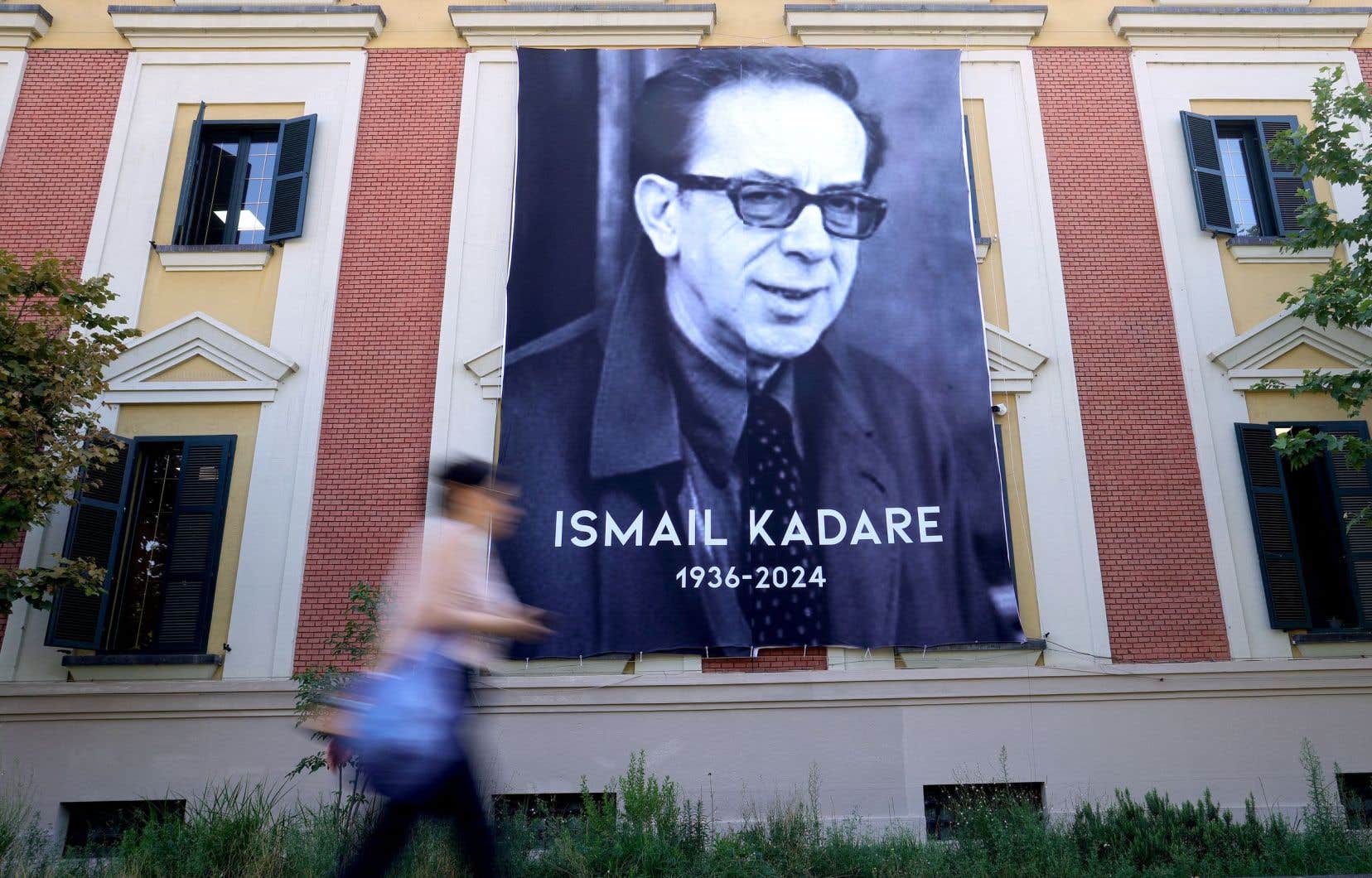The author is a professor of literature in Montreal and a contributor to the journal Argument and essayist. He has notably published These words that think for us (Liber, 2017) and Why do our children leave school ignorant? (Boreal, 2008).
It may be a cliché, but it is nonetheless true: a writer dies, but his work survives him. This is why, as a tribute to the Albanian writer Ismail Kadare, who recently passed away, I will talk less about this character than about his work, born at the confluence of a country and a particular culture to which he was viscerally attached, of a historical conjuncture (the establishment in this country, at the end of the Second World War, of a very repressive communist regime), of an imaginary, finally, which was his own and which is manifested by the recurrence in his novels of certain themes, notably the association of buildings (bridges, towers, walls, pyramids or labyrinthine palaces) with the negation of life and freedom, with power too.
I discovered this work when I was a student, when I happened to come across it in a bookstore The H file.a novel that captivated me from the outset. It follows two Irish researchers specializing in the Homeric epic (the “H.” in the title refers to Homer), who have come to record in the mountains of Albania the last rhapsodes of Europe (the guzlars), capable of singing very long heroic poems just as the reciters of The Iliad or of The Odyssey.
This novel is typical of Kadaré’s work, which mixes the traditions of the land of eagles with world history – that of literature here – and whose narration is always marked both by social satire and by the tragic destiny that weighs on its main characters. This initial discovery led me to frequent his work, from his very first novel, published in 1963, to his last writings, especially essays and autobiographical texts.
Early in his career, Kadare had to deal with censorship and the dogma of socialist realism if he wanted to hope to become a published writer in his own country. Ruled with an iron fist by Enver Hoxha, who led it from 1948 to 1985, the People’s Socialist Republic of Albania was indeed fiercely Stalinist, before moving closer to Maoist China when Khrushchev denounced Stalin’s crimes (1956), finally breaking with the Chinese in 1978 and living from then on with the unenviable reputation of being (along with North Korea) one of the most closed countries in the world.
In these circumstances, the novelist had to play subtly with the codes of communist ideology, while finding in the nationalism of the regime a certain latitude to write novels with a historical flavor. His first novel, The General of the Dead Army (1963), tells the story of the wanderings of an Italian general who came after the war to search Albanian territory for the remains of Italian soldiers killed during the Second World War, in order to repatriate them.
Later, The Winter of Great Solitude (1973), whose ironic tone allowed a criticism of the regime to emerge too perceptibly, narrowly escaped censorship, because the novelist had the good idea of portraying Enver Hoxha in a heroic posture, as the father of the Albanian nation, thus flattering the dictator’s excessive ego.
However, as soon as the writer gave way to more personal inclinations, as in The monster (1965), this hallucinatory tale of the siege of Troy where the famous wooden horse (it is him, the monster in question) represents the burden that a totalitarian society places on the shoulders of individuals, was mercilessly banned. Following the publication of his poem The Red Pashas (1975), he was relegated to the countryside for a period of re-education during which he was sentenced to work for some time in a peasant cooperative.
From the beginning of the 1980s, either because he sensed the wear and tear of the regime or because he drew renewed audacity from his international recognition, the forty-year-old writer inaugurated a new phase of his work, which then reached its peak. He wrote The Palace of Dreams (1981), a novel that features a civil servant who climbs the ranks of a police institution responsible for collecting and analyzing dreams in order to detect potential threats to the state. Is it worth mentioning that this novel, which uncompromisingly denounces totalitarianism, was immediately censored?
Then, after his exile in France in 1990, Kadaré published what is perhaps his greatest novel: The pyramid (1992). He achieves the feat of writing a story whose hero is neither a human being nor an animal, but a monument: the famous pyramid of Cheops, a gigantic tomb erected for the sole purpose of putting an end to abundance and, above all, of nipping in the bud the hope and the spark of revolt that it is likely to give rise to in the minds of a people reduced to slavery.
Beyond this denunciation of organized scarcity and repression under communist regimes, the novelist suggests the bold hypothesis that all human societies, and not just totalitarian ones, are based on a blind spot, a form of arbitrary authority: he thus compares the Egyptian pyramids that the subjects of the pharaoh exhaust themselves building to the Sumerian irrigation canals (a transparent metaphor for the capitalist world), which require as much effort and discipline to be dug and then maintained. The pyramid thus becomes the eternal symbol of oppressive order and power, whatever they may be.
It is the privilege of great works to transcend the precise historical context in which they were born.
